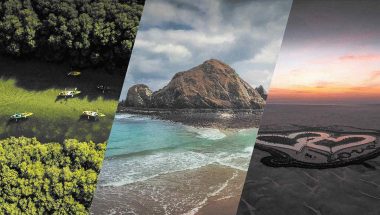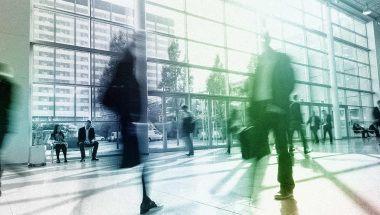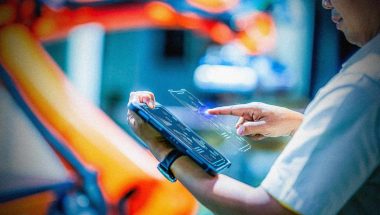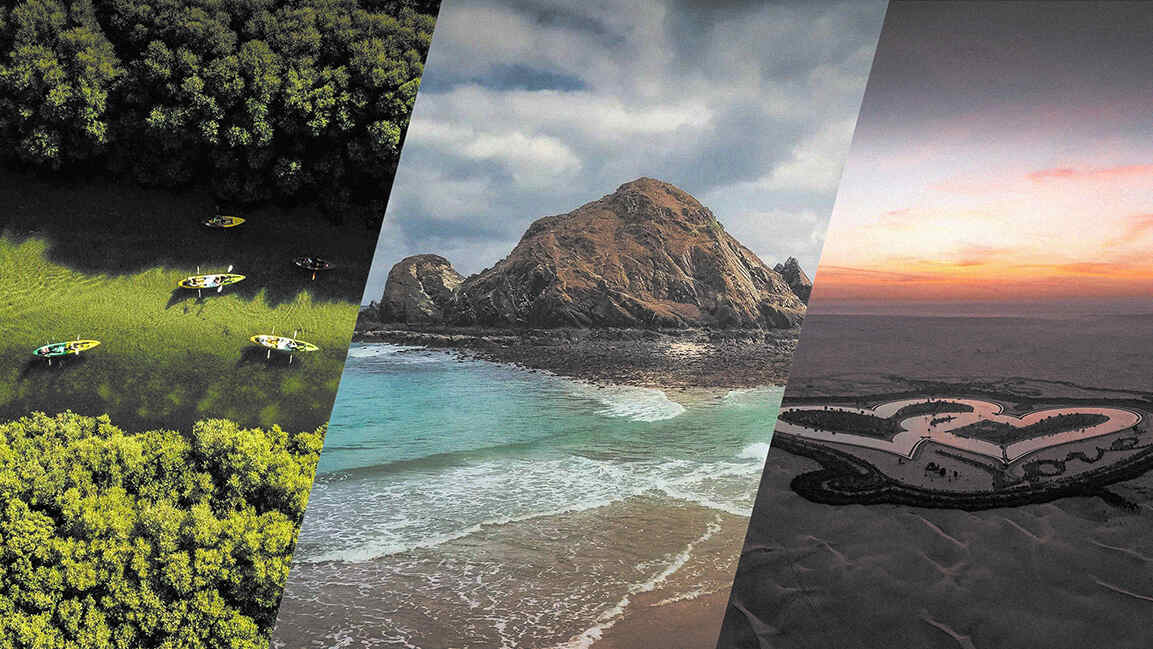- | 10:00 am
This development aims to create a sustainable future in Saudi Arabia
Red Sea Global is working towards a sustainable future as part of Saudi Vision 2030 by developing two regenerative tourism destinations, which are expected to generate $8.8 billion annually and create 120,000 jobs.
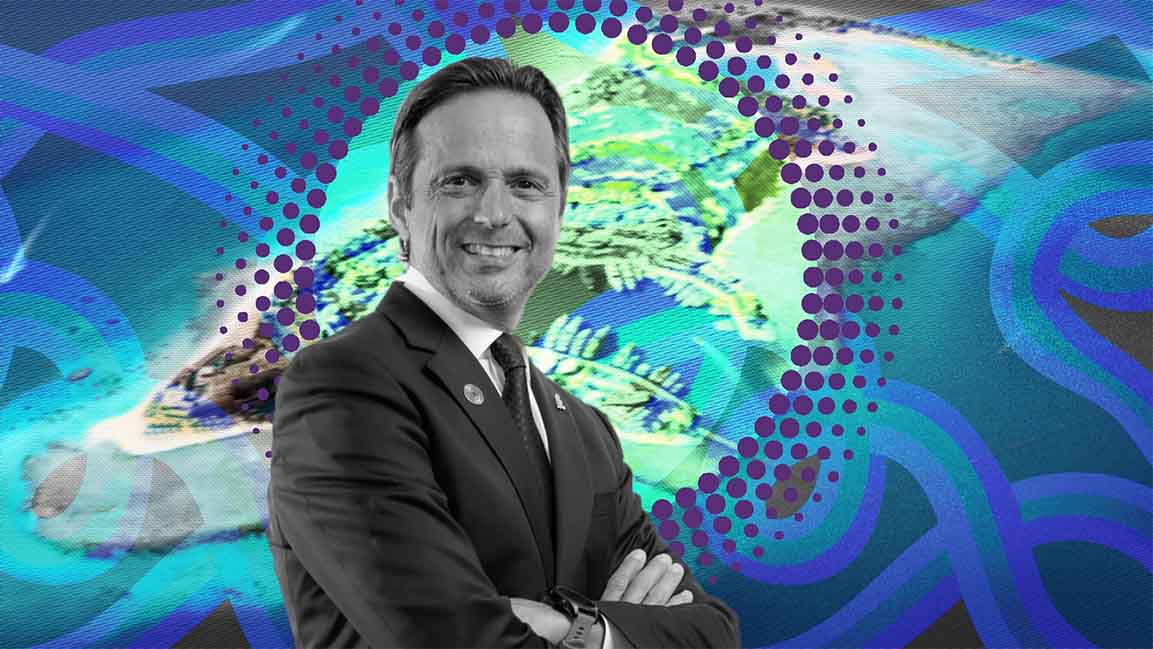
Saudi Arabia has set forth its plan for Vision 2030, which outlines a comprehensive plan to diversify its economy and enhance its infrastructure while promoting social and cultural reforms.
More recently, the kingdom has paved its way to being a popular destination for sustainable travel and tourism through green initiatives and projects, with a vision to be a global tourism hub. And many developers in the region are working towards achieving this status.
One such company, Red Sea Global, a Saudi-based developer, is on the pathway to a sustainable future and forms part of the Saudi Vision 2030 program.
In conversation with John Pagano, CEO of Red Sea Global, he walks us through the company’s growing portfolio of projects, tourism business, and sustainability challenges.
THE EFFORT, THE IMPACT
“At Red Sea Global, we think about the big picture, focusing on projects that integrate values of sustainability and innovation from day one and measure success against global standards, even setting new standards as we go. Yet while these principles guide all our developments, it doesn’t mean they conform to one cookie-cutter approach,” says Pagano.
As a company, Red Sea Global aims to aid the kingdom’s efforts to be a global tourism hub. It is working towards this goal by developing two of the world’s most ambitious regenerative tourism destinations – The Red Sea and Amaala.
Once completed, the Red Sea and Amaala are said to provide significant economic benefits, contributing a combined $8.8 billion annually to the Saudi economy. The destinations will create roughly 120,000 direct and indirect jobs for Saudis and others from the region.
Talking about Red Sea Global’s portfolio, Pagano says, “The Red Sea and Amaala can be seen as world-leading models for luxury tourism and sustainable development – yet each has the unique selling points that set it apart from the crowd.”
In terms of sustainability, The Red Sea aims to be the world’s most ambitious regenerative tourism destination, delivering a 30% net conservation benefit by 2040.
THE RED SEA & AMAALA – WHAT’S SO SPECIAL?
Pagano describes The Red Sea as “marveling at your favorite nature documentary.” The Red Sea’s lagoon is home to 195 species of fish and 175 different species of coral – including a special, super-resilient type of reef thriving despite global climate pressures. It will also offer 50 hotels and 1,000 residential properties, and natural beauty.
On the other hand, Amaala focuses more on wellness, sports, arts, and culture. Upon completion, Amaala will be home to 3,000 rooms across 25 luxury hotels and 900 villas, apartments, and estate homes, alongside high-end retail establishments.
Two of Amaala’s signature attractions will be the Red Sea Marine Life Institute — an educational and scientific research center designed by Foster + Partners – and the Yacht Club at Triple Bay Marina.
The Red Sea and Amaala will welcome guests in 2023 and 2024, respectively. Pagano adds, “We’ll achieve a zero-carbon footprint at Amaala and The Red Sea, with both destinations powered 100% by renewable energy.”
What’s also unique about these megastructures is that they are built from scratch. The possibilities are endless. For example, sustainable and luxury developments can be fitted into natural landscapes; hotels can be built with an ancient mountainside, using the latest technologies to create stainless steel villas that perch over the sea.
Undoubtedly, both these destinations will ooze with luxury treatments and facilities for visitors. But, when asked about the one thing that would be different at Red Sea Global, Pagano says, “Our absolute commitment to people and planet. This means going beyond sustainability to enhance the environment and deliver better futures for the kingdom’s people. We put this ethos of regenerative tourism at the front of any planning or development considerations to ensure we can call ourselves true pioneers of responsible development.”
For Pagano, he sees the region’s ecology as an important asset – not just for the business’s success but for the future generations of Saudi Arabia.
The region has also made significant efforts in recent years to increase female participation in the workforce as part of its Vision 2030 plan to diversify its economy and reduce its reliance on oil. Pagano says, “In recent years, the country’s reforms to remove social barriers have seen the number of women in the workplace double to over 35% of the national workforce, and at Red Sea Global, we launched programs to upskill and train young Saudi women and men alike who are looking to find their place in modern Saudi Arabia.”
IMPACT ON ECOLOGY, FUTURE OF SUSTAINABILITY
The impact on local ecology is critical for the tourism and development sectors. Pagano says, “We’ve capped visitors to The Red Sea at one million per year and annual visitors to Amaala at just 500,000, to limit our footprint. We’re only developing a small portion of each site to ensure we disturb the environment as little as possible – only one percent of The Red Sea site and only five percent of the Amaala site, respectively. At The Red Sea specifically, only 22 of the site’s 90 islands will be developed, with at least nine islands designated as special conservation zones to protect the species that live and thrive there.”
Responsible development has been a cornerstone of the company’s strategy. Developments are guided by an ethos of regenerative tourism, which actively enhances the local environment, preserving it for future generations.
Red Sea Global is researching the carbon sequestration potential of local ecosystems such as algae, seagrass, and mangroves. Intending to eradicate carbon from the environment, the company aims to reduce net emissions at these destinations during development and operations.
Once operational, The Red Sea and Amaala will be powered by 100% renewables. At The Red Sea, the purpose-built battery storage facility is said to be the largest in the world at 1200MWh. The resulting saving in CO2 emissions to the atmosphere across both projects will equal nearly a million tons each year. Pagano believes that investing in this early and recognizing its importance as a business priority creates the highest standards with suppliers, partners, and workforce and allows the company to be flexible as they expand.
As touted by Expedia’s 2022 Sustainable Travel Study, 90% of consumers now look for sustainable options when traveling, with half willing to pay more for transport, lodging, and activities if they are more sustainable.
Pagano says, “With this in mind, we feel we can offer a truly distinct experience for our guests – many of whom will have never experienced Saudi culture and hospitality before and may be surprised at how diverse the region is.”









